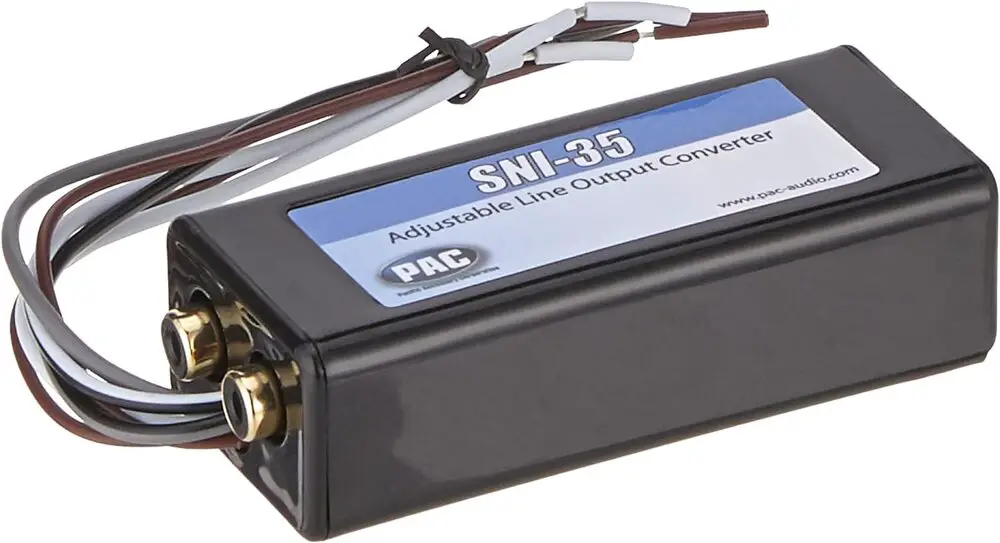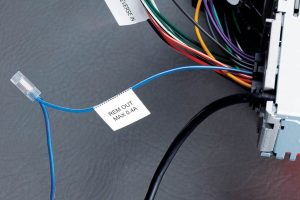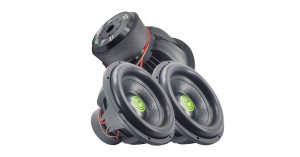What is a line output converter? In simple terms, a line output converter (LOC) is a device used in car audio systems to connect aftermarket amplifiers to factory head units or stereos. It serves as a bridge between the speaker-level outputs of the factory head unit and the line-level inputs of an amplifier. This component is indispensable for achieving high-quality sound in your vehicle’s audio system, especially when upgrading to aftermarket amplifiers while retaining the factory head unit. Let’s dive deeper into understanding the significance of a line output converter and how it enhances your car stereo experience.
Contents
Understanding Line Output Converters
Imagine this scenario: you’re excited to upgrade your car’s audio system with a powerful amplifier to enjoy crystal-clear sound and deep bass. However, upon inspecting your vehicle, you realize that it’s equipped with a factory head unit that lacks preamp outputs commonly found in aftermarket stereos. This is where a line output converter comes into play.

As a car audio enthusiast myself, I’ve encountered this dilemma numerous times. Whether I’m installing a new amplifier or integrating additional speakers into the system, a line output converter becomes essential. It acts as an intermediary device that transforms high-level speaker signals into low-level RCA signals compatible with aftermarket amplifiers. This ensures optimal signal transfer and prevents distortion, allowing you to achieve the desired audio quality without replacing the factory head unit.
Key Features and Benefits
Now that we understand the purpose of a line output converter let’s explore its key features and benefits:
- Compatibility: Line output converters are compatible with a wide range of factory and aftermarket car stereos, making them versatile solutions for audio upgrades.
- Signal Processing: Quality line output converters are designed to process speaker-level signals efficiently, ensuring minimal distortion and maximum fidelity in the audio output.
- Adjustable Outputs: Many line output converters offer adjustable gain settings, allowing users to fine-tune the audio signal according to their preferences and the specifications of their amplifiers.
- Easy Installation: Installing a converter is relatively straightforward, making it accessible to both seasoned enthusiasts and beginners in car audio customization.
- Integration Flexibility: With a converter, you can seamlessly integrate aftermarket amplifiers, subwoofers, and speakers into your car’s audio system while retaining the factory head unit’s functionality and aesthetics.
Installation Tips and Best Practices
As someone who has installed line output converters in various vehicles, here are some installation tips and best practices to ensure optimal performance:
- Locate a Suitable Mounting Position: Choose a secure and accessible location to mount the line output converter, preferably close to the factory head unit or amplifier to minimize signal interference and cable length.
- Proper Grounding: Ensure proper grounding for both the converter and the amplifier to prevent ground loops and audio noise issues.
- Secure Wiring Connections: Use high-quality wiring harnesses and connectors to establish secure connections between the factory head unit, converter, amplifier, and speakers. Properly insulate and protect the wiring to prevent shorts and damage.
- Test and Tune: After installation, carefully test the audio system to ensure all components are functioning correctly. Use a multimeter and audio test tones to adjust gain settings and ensure balanced sound reproduction across all channels.
FAQs (Frequently Asked Questions)
Can I install a line output converter myself, or do I need professional help?
While installing a converter is relatively straightforward, it does require basic knowledge of car audio systems and wiring. If you’re comfortable working with electronics and following instructions, you can install it yourself. However, if you’re unsure or inexperienced, seeking professional assistance is recommended to avoid potential damage to your vehicle’s electrical system.
Do all cars require a line output converter for audio upgrades?
Not necessarily. Some newer vehicles come equipped with factory head units that have preamp outputs, making it easier to integrate aftermarket amplifiers without the need for a line output converter. However, many older or lower-end vehicles may lack these preamp outputs, necessitating the use of a line output converter for audio upgrades.
Are all line output converters the same, or are there differences in quality?
Line output converters vary in terms of quality, features, and compatibility. Higher-quality converters typically offer better signal processing, adjustable gain settings, and enhanced durability. It’s essential to choose a reputable brand and model that suits your specific audio upgrade needs and vehicle compatibility.
Will installing a line output converter void my car’s warranty?
In most cases, installing a line output converter should not void your car’s warranty, as it does not involve modifying or altering the factory head unit or other critical components. However, it’s always wise to consult your vehicle’s warranty documentation or contact the manufacturer for clarification before proceeding with any aftermarket modifications.
Can a line output converter improve sound quality in my car’s audio system?
Yes, a line output converter can significantly enhance sound quality by ensuring optimal signal transfer and processing between the factory head unit and aftermarket amplifiers.
Conclusion
In conclusion, a line output converter is a crucial component in upgrading and enhancing your car’s audio system. Whether you’re adding a subwoofer for deep bass, amplifying your speakers for better clarity, or integrating additional audio components, a quality converter ensures seamless compatibility and optimal signal processing. By understanding its purpose, features, installation tips, and best practices, you can elevate your car stereo experience to new heights. So, if you’re considering an audio upgrade for your vehicle, don’t forget to include a converter in your plans for superior sound quality on the road.






